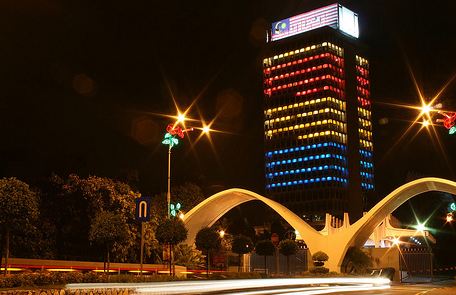The Malaysian electoral system follows the British parliamentary, as opposed to the US presidential, system. The country is geographically divided into constituencies. The electorate in each constituency vote for their Member of Parliament to sit in the Lower House of Parliament (the Dewan Rakyat). The Prime Minister has to command the confidence of the majority of the Members of Parliament in the Lower House. The same principle applies at the state level; the legislature at the state level is called the State Legislative Assembly.
Each constituency is contested by candidates who stand either as nominees of political parties or as independents. The two major political coalitions in Malaysia are Barisan Nasional (BN) and Pakatan Rakyat (PR). In this General Election, there are 222 federal parliamentary seats that are being contested.
BN is the incumbent ruling coalition, headed by the caretaker Prime Minister, Najib Abdul Razak. Although the coalition consists of more than ten component parties, the three main component parties are racially based parties: the United Malays National Organization (UMNO), the Malaysian Chinese Association (MCA) and the Malaysian Indian Congress (MIC). BN held 135 seats in the recently dissolved Federal Parliament.
PR is the incumbent opposition coalition, headed by its de facto leader, Anwar Ibrahim. The coalition consists of three ideologically based parties: the People’s Justice Party (PKR), the Democratic Action Party (DAP) and the Pan-Malaysian Islamic Party (PAS). PR held 75 seats in the recently dissolved Federal Parliament.
 Facebook
Facebook  Twitter
Twitter  Soundcloud
Soundcloud  Youtube
Youtube  Rss
Rss 